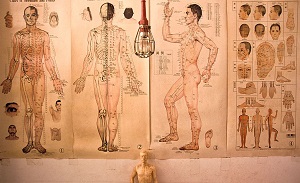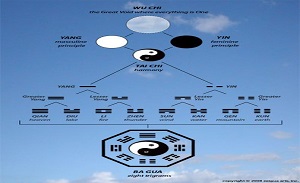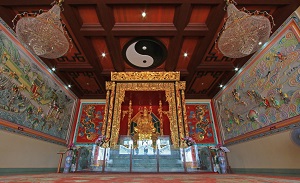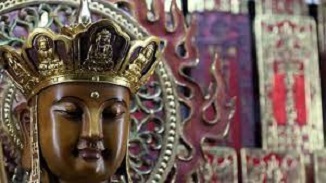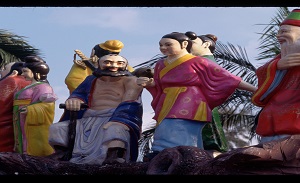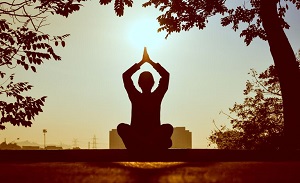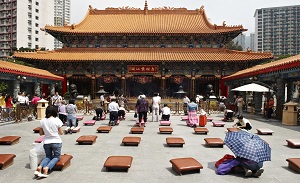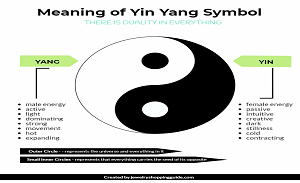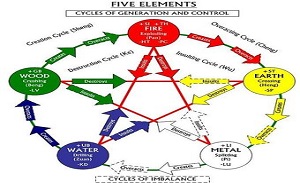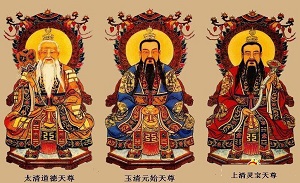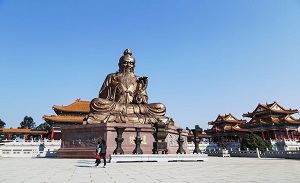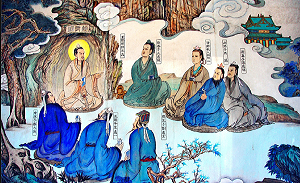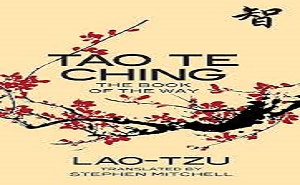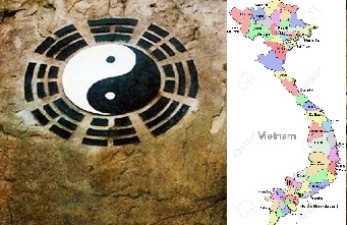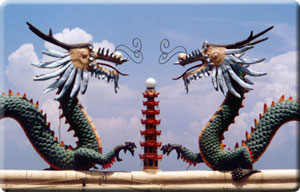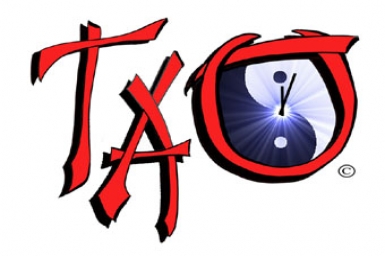Taoism
-
How Qi Flows Through the 12 Main Meridians
By Admin Webmaster 2/28/2024 10:38:49 AMIn traditional Chinese medicine like acupuncture, the flow of energy, or qi, through the 12 meridians.
-
International Conference on Taoism, Taiwan 1-5 January 2024
By Admin Webmaster 1/17/2024 11:15:35 AMThe 17th International Conference on Daoist Studies "Daoist Ways of Enhancing Life
-
Wu Wei: The Taoist Principle of Action in Non-Action
By Admin Webmaster 1/9/2023 11:09:49 AMOne of Taoism’s most important concepts is wu wei, which is sometimes translated as “non-doing” or “non-action.”
-
Bai Hui Acupressure Point
By Admin Webmaster 8/3/2022 11:36:26 AMAt the summit of our bodily mountain, the north pole of our bodily planet lies Bai Hui -- “Hundred Convergences” (or "Meetings") -- the 20th point on the Governing Vessel (aka Du Mai). Alternate names for Bai Hui -- which is located on the midline of the head, in line with the apex of the ears, i.e. pretty much right at the crown -- include Dian Shang (“Mountain Top”) and Tian Man (“Celestial Fullness”).
-
Introduction to the Ren Meridian Conception Vessel
By Admin Webmaster 6/27/2022 9:18:29 AMhe Ren Mai or Ren Meridian -- also known as the Conception Vessel -- is a channel of life-force energy (Qi) within the subtle body, that is used in qigong and acupuncture practice.
-
The Mid-Autumn Festival - Zhongqiu Jie
By Admin Webmaster 6/6/2022 9:40:10 AMThe Mid-Autumn Festival (Zhongqiu Jie) is a traditional Chinese holiday and Taoist festival that is celebrated on the 15th day of the eighth lunar month, around the time of the autumn equinox.
-
The theme of the Colloquium was “Christian and Taoist Ethics in Dialogue.”
By Admin Webmaster 4/25/2022 10:15:12 AMThe Pontifical Council for Interreligious Dialogue (PCID), the Roman Catholic Archdiocese of Singapore, and the Taoist Federation of Singapore (TFS) jointly organized the Second Christian-Taoist Colloquium.
-
The Meaning of Wuji (Wu Chi), the Un-manifest Aspect of the Tao
By Admin Webmaster 4/12/2022 9:02:47 AMThe Chinese word Wuji (pinyin) or Wu Chi (Wade-Giles) refers to the unmanifest aspect of Tao: Tao-in-stillness, in other words. Wuji is the undifferentiated timelessness which, in the Taijitu Shuo (a traditional Taoist diagram) is represented by an empty circle.
-
Acupressure of Hui Yin Point
By Admin Webmaster 2/16/2022 10:26:23 AMAt the very root of the torso, at the center of the pelvic floor, a half-inch in front of the anus, lies Hui Yin, the first point on the Ren Mai (aka Conception Vessel). The English translation of Hui Yin is “Meeting Of Yin” or “Convergence Of Yin.” The point is also occasionally rendered as “Seabed.”
-
The Shamanic Origins of Taoism. The Historical Origins Of Taoism In China
By Admin Webmaster 1/26/2022 10:38:39 AMThe beginnings of recorded historical China lie some 5,000 years ago when a tribal people settled along the banks of the Yellow River -- its source high on the Tibetan plateau, its mouth at the Yellow Sea.
-
Tao Te Ching - Verse 42
By Admin Webmaster 1/14/2022 10:57:15 AMTao gives birth to One, One gives birth to Two, The Two gives birth to Three, The Three gives birth to all universal things.
-
Taoist Immortal Lu Dongbin (Lu Tung Pin): An Introduction
By Admin Webmaster 5/12/2021 11:01:35 AMThe most well-known of the Eight Immortals—and sometimes portrayed as their leader - is Lu Dongbin (also spelled Lu Tung-Pin), who is considered, in various contexts, as the patron of jugglers, magicians, barbers, and neidan: a true Renaissance man! What we know of his historical life was that he was a Tang dynasty scholar and poet.
-
An Insider's Look at Taoist Cosmology
By Admin Webmaster 5/10/2021 9:25:59 AMEvery spiritual tradition has a defined (or implied) cosmology: a story about the origin of the universe--about how the world as we perceive it comes into existence.
-
The Eight Immortals Of Taoism
By Admin Webmaster 4/12/2021 10:52:16 AMFor devout believers, a central tenet of the ancient Chinese practice of Taoism is the belief that adhering to certain beliefs and practices can lead to very long life, even immortality.
-
Overview of Internal Alchemy in Taoism
By Admin Webmaster 4/5/2021 11:15:53 AMnner Alchemy or Neidan, a term often used synonymously with Qigong, is the Taoist art and science of gathering, storing, and circulating the energies of the human body.
-
Daoism in China Schools, Main Tenets, and the History of Practicing "The Tao"
By Admin Webmaster 3/24/2021 9:51:57 AMDaoism or 道教 (dào jiào) is one of the major religions indigenous to China. The core of Daoism is in learning and practicing “The Way” (Dao) which is the ultimate truth to the universe.
-
What Does the Yin-Yang Symbol Mean?
By Admin Webmaster 3/17/2021 9:13:24 AMThe most well-known of Taoist visual symbols is the Yin-Yang, also known as the Taiji symbol. The image consists of a circle divided into two teardrop-shaped halves—one white and the other black. Within each half is contained a smaller circle of the opposite color.
-
The Taoist Five Elements
By Admin Webmaster 3/12/2021 8:59:32 AMAccording to Taoist cosmology, Yin-Qi and Yang-Qi – the primordial feminine and masculine energies – produce what are known as the “Five Elements.” The Five Elements, in turn, give birth to the “ten-thousand things,” i.e. all of manifest existence. The Five Elements are Wood, Fire, Earth, Metal, and Water.
-
The Three Purities of Taoism
By Admin Webmaster 2/26/2021 9:20:16 AMThe Three Purities, or the Three Pure Ones, are the highest deities in the Taoist pantheon. They function, for Taoism, in a similar way to the Trinity (Father, Son, and Holy Spirit) of Christianity, or the Trikaya (Dharmakaya, Samboghakaya, and Nirmanakaya) of Buddhism. They represent three aspects of the divinity inherent in all living beings.
-
Laozi, the Founder of Taoism
By Admin Webmaster 2/26/2021 9:06:35 AMLaozi, also known as Lao Tzu, is a Chinese legendary and historical figure who is considered to be the founder of Taoism. The Tao Te Ching, Taoism’s most sacred text, is believed to have been written by Laozi.
-
Gender and Taoism
By Admin Webmaster 2/24/2021 10:30:03 AMAccording to Taoist practice, at the deepest level of our being—in our spiritual essence—we are neither man nor woman. Learn how this concept applies throughout Taoism, including its history, scriptures, ceremonies, and tradition.
-
The Shamanic Origins of Taoism. The Historical Origins Of Taoism In China
By Admin Webmaster 2/22/2021 10:14:16 AMThe Historical Origins Of Taoism In China
-
About the Tao Te Ching
By Admin Webmaster 10/9/2020 10:27:51 AM“Tao Te Ching” is the Wade-Giles romanization of the original Chinese title. Depending on the specific set of rules one follows, it can also be written like “Tao-te Ching” — with the hyphen and the second character in lowercase.
-
Tao Te Ching: Annotated & Explained
By Admin Webmaster 10/9/2020 10:11:47 AMOriginally written by a sage named Lao Tzu over 2,500 years ago, the Tao Te Ching is one of the most succinct—and yet the most profound—spiritual texts ever written.
-
Taoism – a part of the Three Religions of Vietnam
By Admin Webmaster 2/10/2017 9:43:53 PMTam Giao, which includes Buddhism, Confucianism and Taoism, plays the key role in Vietnamese religion. “Tao” means “path” or “way” that turns Taoists’ thoughts to health, longevity, immortality and spontaneity.
-
Taoism 101: Introduction to the Tao
By Admin Webmaster 3/8/2016 10:11:33 AMTaoism teaches a person to follow their breath, to embrace wonder and the joy in living gracefully with style. So here is the modern practical guide to living as a Taoist!
-
A Short History of Daoism
By Admin Webmaster 2/6/2016 10:31:10 AMDaoism is an organised religious tradition that has been continuously developing and transforming itself through China, Korea and Japan for some two thousand years. Now it has spread around the globe from Sydney to Toronto and includes among its followers people from a whole range of ethnicities and cultural backgrounds. -
The Value of the Tao
By Admin Webmaster 2/6/2016 10:31:10 AMWhat makes the Tao so special? Authentic traditions of the Tao emphasize practical teachings that anyone can follow, so we cannot stop at simplistic slogans like “the Tao is priceless.” We also cannot avoid answering the question with glib statements like “the specialness of the Tao cannot be expressed with words.”


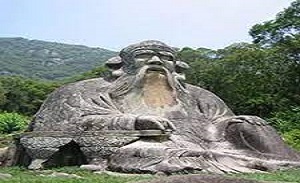
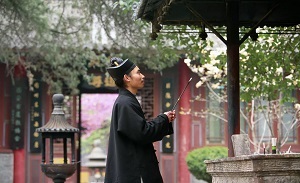
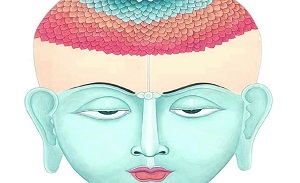

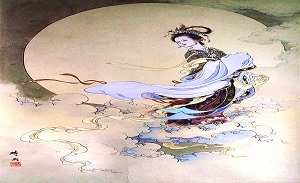

%2C%20the%20Un-manifest%20Aspect%20of%20the%20Tao.jpg)
